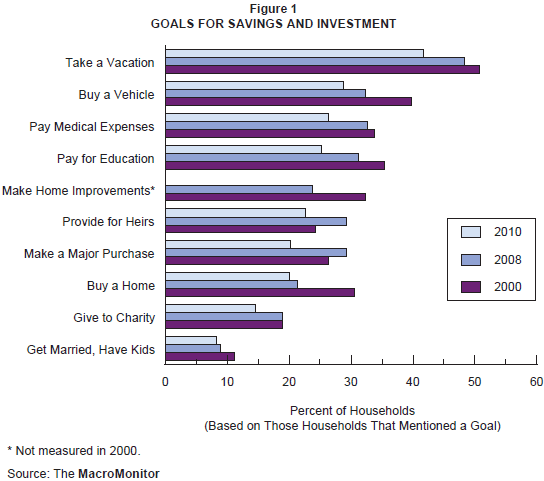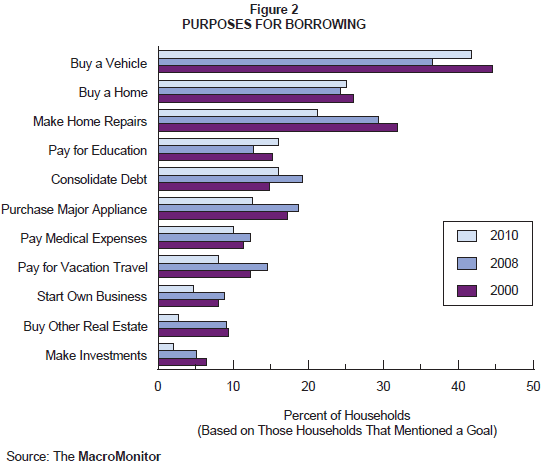MacroMonitor Market Trends February 2011
MacroMonitor Market Trends is a newsletter from Consumer Financial Decisions that highlights topical news and trends of interest to you and your colleagues. If you would like more information about the topic in the newsletter or would like to discuss other ways that we can assist you in your research and marketing efforts, please contact us.
Uh-Oh! Some Consumers Have Dug Themselves into a Hole
What is clear from 2010–11 MacroMonitor data is that since 2000, many consumers have dug themselves into a financial hole. Although most have started to grapple with the problem, many of these households will need time to figure out how to reverse the recession damage to their monetary health—particularly because many households are financially disengaged (see the January 2011 MacroMonitor Market Trends Newsletter). Current signs of economic improvement do not translate into robust growth or an uptick in fortunes for the majority of households. Recovery will be uneven. Welcome to the New Normal.
Except saving for retirement and emergencies, all savings and investment goals measured by the MacroMonitor (see Figure 1) trend down from 2000 to 2010. Retirement remains the number one goal for the majority of households (77%); emergency expenses are the number two goal (61%). The inability of more households than previously to save for medical expenses implies that dependence on state and national social safety-net programs will increase regardless of the impact of retiring Baby Boomers. Other possible implications of downward savings and investment trends are an increase in home disrepair—further depressing home value—and a decline in the number of newly forming households and associated retail sales for goods and services.

Because fewer households mention all savings and investment goals in 2010 than in 2000, what about borrowing? If households are less likely to save for a goal until they can afford it—delaying gratification—what are households immediately willing to borrow for? Clearly, the trends in Figure 2 show that fewer households in 2010 than in 2000 are willing to assume additional debt. Exceptions exist, such as borrowing to buy a home or a vehicle—the American Dream of prosperity and success. Low interest rates and government programs such as the 2009 cash-for-clunkers scheme and first-time home-buyers tax breaks helped steady these trends. Only willingness to borrow to pay for an education has increased over time—an important investment in the future. For educational expenses—another pathway to an American Dream—the data indicate that some households are willing to trade off saving for borrowing.

In spite of the recession and its lingering ramifications, many households continue to save, invest, and borrow. The unevenness of households' financial situations in the New Normal means that it will be much more challenging for financial-services providers to find new ways to separate the good news from the bad news and to find, encourage, and persuade those households that want to engage.
To learn more about how the MacroMonitor can help you identify and understand better financial households that do represent business opportunities, please contact CFD.